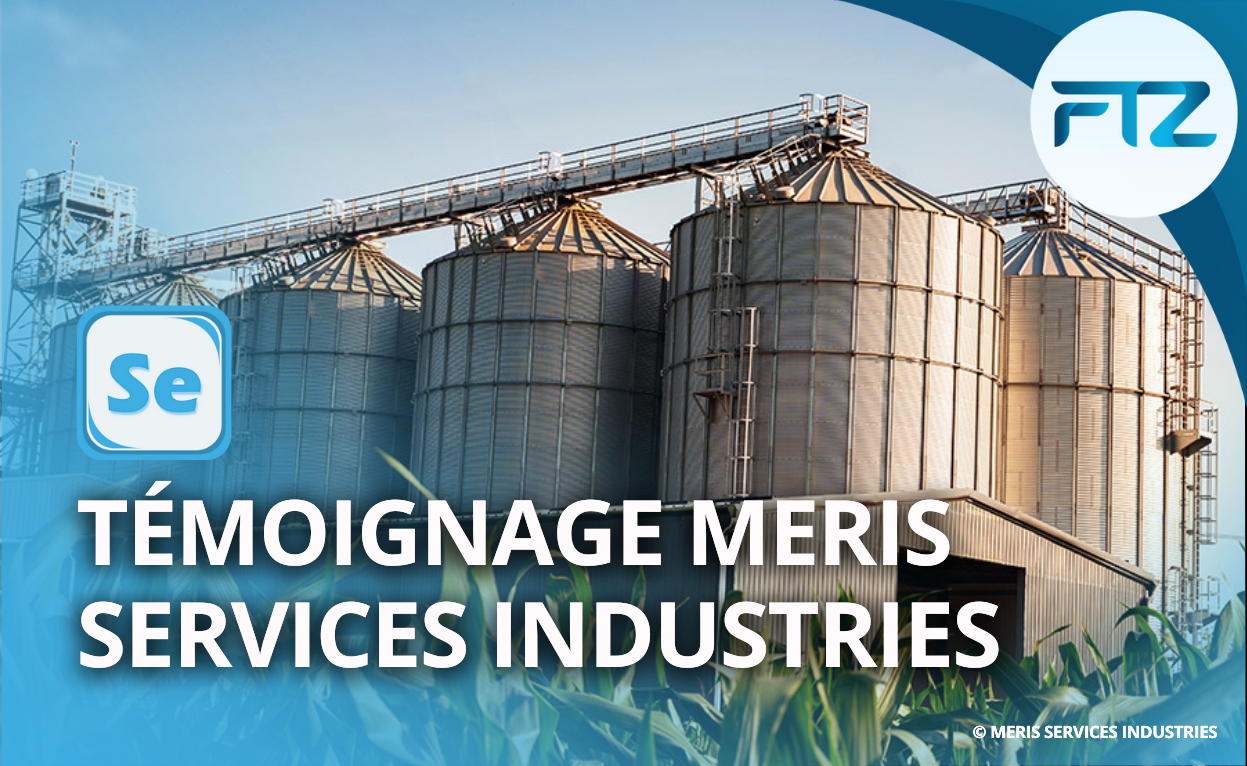
MERIS uses SchemELECT to structure its electrical design
In the field of electrical design applied to the production of industrial equipment, the reliability of CAD tools is essential. Mr Maerten, head of the electrical department at the MERIS group, shares his experience with SchemELECT.
What are the specific electrical requirements for the manufacture of industrial silos and dryers ?
The MERIS Group designs and manufactures agricultural silos and industrial dryers for demanding environments. Behind every machine we deliver lies the meticulous electrical design work that is essential for the equipment to work properly. The production of control cabinets, distribution boxes and all the internal electrical networks requires a high level of precision.
‘Each project we handle has its own technical constraints, whether in terms of the installation’s environment, automation or safety,’ explains Mr Maerten. ‘This means that we have to be extremely meticulous when drawing up the electrical diagrams, because the slightest error can have consequences in production or in the field.
On a day-to-day basis, the electrical department plays a central role in the technical development of the equipment. It is involved at various stages in the process, from the design of diagrams to the definition of cabling and automation solutions. Its work ensures the electrical coherence of each machine and guarantees that the cabinets and control boxes meet the functional, regulatory and operational requirements of the project.
In this context, having a high-performance electrical CAD tool has become an imperative to meet the quality, deadline and customisation requirements specific to each project.
Why was it necessary to replace the old electrical design tool ?

Avant l’arrivée de SchemELECT, l’équipe utilisait un logiciel de conception qui ne répondait plus aux exigences croissantes de leurs projets. « L’outil que nous utilisions auparavant était vieillissant, limité en fonctionnalités et peu adapté à la complexité de nos équipements », constate M. Maerten. Ces contraintes freinaient la productivité du service électricité et ne permettaient pas de suivre l’évolution des besoins du groupe MERIS, notamment pour les machines à forte valeur ajoutée.
How did SchemELECT come to be the right solution for MERIS ?
The transition to SchemELECT was a natural one, encouraged by the recommendations of ITS Process, which was already using the software within the MERIS group. This positive feedback meant that the changeover could be made with confidence, with the certainty that the solution would meet the concrete needs of the electricity department.
Designed to meet the realities of industrial plant manufacturing, SchemELECT integrates easily into the electrical design process. From our company Its rapid learning curve and project-oriented approach make it perfectly suited to the production of complex machines, such as the silos and dryers developed by MERIS.
‘The software is very accessible. Its ergonomics are intuitive, and above all, the functionalities are advanced. It perfectly meets MERIS‘ requirements for the development of our machines,’ stresses Mr Maerten.
Beyond the functional aspect, the software offers a structured working environment that facilitates the rigour required at each stage of the design process. It is now a key solution in the day-to-day organisation of the electrical engineering department, in line with the quality standards expected by the Group.
What concrete benefits does the electricity department derive from using SchemELECT ?
With SchemELECT, the electrical team now has a structured, high-performance working environment for managing the entire design process for electrical cabinets and enclosures for silos and dryers. The software makes it possible to centralise the information for each project and ensure continuity in the design, from the first plan to the final documentation.
This organisation helps to ensure the reliability of deliverables and limit the risk of errors or inconsistencies.
The automation of certain repetitive tasks, such as placing symbols or generating terminal strips, represents a real time-saver for the teams. This allows technicians to concentrate on the more complex and specific aspects of projects, while meeting the often tight production deadlines.
To sum up, the adoption of SchemELECT has made the electrical design process more professional, with measurable gains in terms of quality, responsiveness and fluidity of production.
What difference does FTZ's technical support make to the use of the software ?
In addition to the software’s functionality, another factor quickly proved to be decisive for the electricity department: the quality of the support offered by FTZ. In an industrial environment where deadlines are often tight and technical projects complex, being able to count on responsive and competent support represents real added value on a daily basis.
‘FTZ support is a real strength. If there’s a problem, we get quick feedback and clear answers,’ stresses Mr Maerten. This availability means that the team never gets stuck when faced with a problem or a technical query. The gain in serenity and work continuity is significant, particularly during the critical phases of production start-up or last-minute modifications.
This support, often underestimated when choosing software, makes all the difference here. Not only does it help users to get to grips with the tool, it also ensures smooth, long-term deployment within the company. For MERIS, it’s a guarantee of stability and reliability in a field where precision and responsiveness are essential.
Conclusion
By replacing an obsolete tool with a modern, flexible solution supported by a responsive team, the MERIS electrical department has gained in efficiency and rigour. SchemELECT is now an indispensable tool for designing, documenting and optimising complex electrical equipment in the industrial sector.

